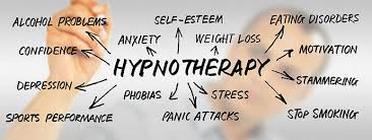 New Year's resolutions can be wonderful. It helps us to define our goals and set those goals into action. However sometimes even though our intentions are well meant, we sometimes need a little extra encouragement. Maybe try another approach. Have you thought about hypnosis? With hypnosis we can open up that part of our mind, the subconscious mind to create the outcomes we desire. Our conscious mind the part of our mind that talks us into thinking that it doesn't matter if we don't succeed, we can try again later. Or maybe its saying we aren't strong enough to succeed. Whatever that voice is saying just know there are positive options. I invite you, and encourage you to try hypnotherapy as a solution to what your heart desires in your life for the New Year and even now....get started creating those goals and create action changes to fulfill those desires. I am a Certified Hypnotherapist, Certified Life Coach and Certified Reiki Master/teacher. Inbox me and let's get started creating goals that Will create changes in your life. www.crystalwater.life
0 Comments
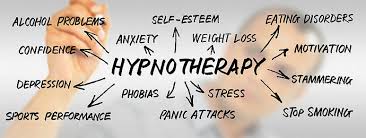 HYPNOTHERAPY Studies have shown that hypnosis can be effective at relieving pain during certain medical procedures. It has also been proven successful at treating children with cancer undergoing painful treatments. Trials have shown that hypnosis can also help relieve pain from gastrointestinal disorders and can even speed the healing of surgical wounds and broken bones. Another benefit, according to Consumer Reports, is that side effects associated with hypnosis are extremely rare and are relatively minor compared to those associated with drugs. In investigations of what types of pain hypnosis is effective and which types are not, most seem to indicate that hypnosis is universally successful in pain management. Hypnosis has been shown effective in management of many varied types of pain, including pain associated with childbirth angioplasty, leukemia, and even headaches. Hypnosis has been used as a psychological treatment for a variety of illnesses with apparent success. While it is unlikely that hypnotic suggestions are capable of curing physical disease, they can be used to enhance relaxation and alleviate pain and other physical discomforts, and therefore they may make a positive contribution to the overall quality of care and of life. For example, several controlled studies have shown that hypnotic suggestions administered to patients who suffer from asthma can reduce both bronchodilators use and attacks of "wheezing", as well as increase peak expiratory flow rates. Hypnosis has also been used effectively in the treatment of irritable bowel syndrome, hyperemesis gravidarum (persistent nausea and vomiting) in pregnant women, and anticipatory nausea experienced by cancer patients who receive chemotherapy. Hypnotic suggestions have been observed to stimulate and inhibit allergic responses and may also speed the healing of burns and wounds. Some of the most common pain and health issues manageable through hypnosis include:
If you’re picturing a stage act led by a man with a swinging watch who gets volunteers to walk like a chicken or bark like a dog, forget that. Clinical hypnosis is a real therapy in which you learn how to use the power of your mind to help make positive changes. And you’re in control. During hypnosis, you’ll focus on relaxation and letting go of distracting thoughts. You may become more open to specific suggestions and goals, such as lowering pain. After your session, your therapist will go over the things that you can do to help you reach those goals. Research shows that medical hypnosis can help with both sudden (acute) and long-term (chronic) pain from cancer, burns and rheumatoid arthritis It may also ease the some anxiety people feel before surgery. Hypnosis is a set of techniques designed to enhance concentration, minimize one's usual distractions, and heighten responsiveness to suggestions to alter one's thoughts, feelings, behavior, or physiological state. Hypnosis is not a type of psychotherapy. It also is not a treatment in and of itself; rather, it is a procedure than can be used to facilitate other types of therapies and treatments. People differ in the degree to which they respond to hypnosis. The key to becoming hypnotized is the extent to which a person is hypnotizable, which is a very reliable and stable individual difference trait that indexes one's openness to hypnotic suggestions. How does hypnosis work? During hypnosis, the conscious part of the brain is temporarily tuned out as a participant focuses on relaxing and letting go of distracting thoughts. By making his/her mind more concentrated and focused, a participant is able to use it more powerfully. A good analogy is that it’s like using a magnifying glass to focus the rays of the sun and make them more powerful. So, what is hypnosis like? When under hypnosis, a person may experience physiologic changes. It’s common for their pulse and respiration to slow down and their alpha brain waves to increase. In this altered state, a person may become more open to specific suggestions and goals offered by the therapist, such as reducing pain. After this suggestion phase, the therapist reinforces continued use of the new behavior or mindset. For everyone, the experience is a little different. Some people describe their experience as a “trance-like” state. Others may experience it as imagery or the soothing of body sensations. Most people describe hypnosis as pleasant, where they feel focused and absorbed in the experience. They tend to have an acute awareness, but also feel relaxed, comfortable and peaceful. Hypnosis techniques for pain management: Hypnosis treatment for pain conditions typically consists of 4 stages:
Another technique being used for decreasing the sensitivity to pain is hypnoanalgesia. The goal here is to use hypnosis in place of an analgesic in hospitals during surgery to reduce nausea, pain, vomiting and the length of hospital stay. What began as somewhat anecdotal, positive results for hypnoanalgesia has now been supplemented by well-controlled experiments. Common myths about hypnosis Hypnosis can’t do everything. There are many myths, misconceptions and misinformation about it – possibly even more than about any other treatment for chronic pain. People have preconceived notions based on stage performers, television and movies and rumors – and these cultural references tend to embellish what it can do. Hypnosis cannot cure everything. It isn’t dangerous. Participants won’t be asked to do anything against their will. (refer to chart below for common myths and their truths) Benefits for pain management
· May be more effective or at least equivalent to other treatments for acute and chronic pain · Have the potential to save both money and time for patients and clinicians, if the patient responds to hypnosis · May be able to provide analgesia, reduce stress, relieve anxiety, improve sleep, improve mood and reduce the need for opioids · Can enhance the efficacy of other well-established treatments for pain When It's Used Since hypnotherapy is an adjunct form of therapy, used along with other forms of psychological or medical treatment, there are many applications. Hypnotherapy can be used to treat anxiety, phobias, substance abuse including tobacco, sexual dysfunction, undesirable spontaneous behaviors, and bad habits. It can be used to help improve sleep, learning disorders, communication, and relationship issues. Hypnotherapy can aid in pain management and help resolve medical conditions such as digestive disorders, skin issues, and gastrointestinal side effects of pregnancy and chemotherapy. It can also be used by dentists to help patients control their fears or to treat teeth grinding and other oral conditions. The subconscious mind is the part of our consciousness that defines who we are and what we do consistently. It makes up our personality. It starts off empty when it is first developed before birth, and then starts gathering information from our experiences and perceptions about what happening around us. This information is held in our permanent memory, which contains all the information that we gather throughout our lives. Some of this information in the subconscious mind can turn into habits and we react automatically to people and circumstances in our lives. This information can also develop into beliefs, which we think are true, even though we may not have definite proof. The subconscious mind resists change, which is usually beneficial by allowing us to conserve a great deal of mental energy. This enables us to maintain a consistent personality throughout our lives, but can cause problems when we decide we need to make a change in how we think, feel, or behave, which are areas in which hypnosis can help. The Subconscious Mind is always working to protect us from what we believe to be dangerous. Emotions are generated when our perceptions about what is going on around us interact with our beliefs about how we think things should be. For example, when the Subconscious Mind perceives what it believes to be a dangerous situation, it generates fear. Another example could be when it perceives that you have been treated unfairly, it will generate anger. Hypnosis can directly affect these beliefs and habits. The conscious mind is where you are right now and where we spend most of our waking time. It basically does only four things. 1) It analyzes. This is the part that looks at problems and what needs to be done to solve those particular problems. It’s also the part that makes hundreds of decisions throughout the day, things like “should I answer the phone?”, “Should I open the door”. Some of these things we think are automatic but we have to make a decision whether to do them. 2) It rationalizes. It gives a reason for everything we do. If we don’t have a reason why we do the things we do, we become anxious, nervous, frustrated. The problem is that we consciously rationalize is often not correct. 3) It houses working memory. This is the memory we need every day. “What’s my phone number?” “What are my kid’s names?” Those are the types of things we need to remember to get through the day. 4) It provides will power. In hypnosis, we relax the conscious mind in order to access the subconscious mind. In hypnosis, we relax the conscious mind in order to access the subconscious mind. Hypnosis is commonly defined as a heightened state of suggestibility, which is usually brought about by means of a hypnotic induction. A more formal definition is that hypnosis is the bypass of the critical factor and the establishment of acceptable selective thinking. Hypnosis can be effective at helping change habits, behaviors, and emotional responses because it works at the subconscious and conscious levels of the mind to create change. Yes, the part of you conscious mind that remembers operates normally in hypnosis. You are not asleep and you are fully conscious in hypnosis. In fact you have heightened attention and are more conscious than normal. All levels of your mind, the conscious, subconscious, and unconscious will be working in sync. The unconscious mind is the consciousness of the body. It is developed before birth and is completely programmed to take care of all of the things that keep the body running smoothly such as breathing, digesting food, and protecting against infections. The unconscious mind can learn. Dr Ivan Pavlov famously demonstrated this with by training dogs to salivate to the sound of a bell when the bell had been paired with a bit of food. The unconscious mind means well, but sometimes will program us to do things that aren’t in our best interests. The unconscious mind can actually generate symptoms like a headache or stomachache to protect us from stressful situations. An example of this is a child who will learn to be sick in order to avoid going to school. In its mission to protect us, it can cause us to desire unhealthy substances if it thinks they will help us relax or cope with stress. Hypnosis can be used to overcome this programming. Are you ready to release all habits that are not for your higher good? Are you ready to reduce pain, stress, anxiety from your life? Whatever it is that you want to eliminate from your life now is the time. Reach out now and begin the life you deserve. www.crystalwater.life www.crystalwater1110@gmail.com  Day 1 Plan ahead. Take a moment to write out the holiday events on a calendar. Organize those events you plan to attend or not attend. On the calendar write yes, no or maybe on the date. Remember it’s okay to say no and not attend every gathering you receive an invite to. The key is to not stress over it. Prioritize those first and let yourself make new choices. It’s okay to skip the Christmas Party this year. When things seem to get too crazy, you’ll be glad you planned. When you allow yourself to do less you’ll get more time to enjoy your holiday with others. Keep it Simple. Day 2 Prioritize Self-Care, sometimes we get too busy running here and there during the holidays. The spirit of giving and enjoying family and friends gets lost. It’s important to take time for you. The holidays can bring moments of painful sad memories, it makes it hard to celebrate. Be kind to your-self, put yourself first. And ask for help when you need it. It’s not a sign of weakness or dependency. There’s no reason to feel guilty. Put a different twist on the traditional holiday meal. Have a pot luck and have everyone bring their favorite holiday dish and with a story as to why its their favorite. Be creative, this can be a fun and exciting time. Less stress is key. Remember you are in control. Day 3 Setting boundaries, instead of trying to please everyone. It’s okay to try something new. You can host a holiday for friends and be with family another time. Think about what you want. What could you do different? Is there anything you really don’t wan to do? Remember it’s okay to say No or maybe. Is there one thing that would make your holiday more enjoyable. Are there any obligations you would like to say no to, it’s fine to say no. Don’t allow negative self-talk, or guilt keep things from changing. Your allowed to try something new. Create a new tradition. Take a drive and enjoy the decorations an festive lights. Whatever you choose is okay. Self-care doesn’t mean that your selfish, it means that your needs count too. Day 4 Holiday season can be over whelming trying to plan events, gift giving, and the finances to get it accomplished. Take time for yourself, take a long bath in fragrant essential oils relax to your favorite holiday music. Meditate on what brings you joy and happiness, keep a journal. Before it’s time to spend time with family set quietly and think about how you would like the day to unfold. Be prepared to accept them as they are. You can be in control of only one person you. So, accept those things you can’t change and detach from the rest. Be true to yourself and your happiness. Day 5 No matter how difficult we think it is, we can prepare ourselves for challenging situations and people or even family members we encounter during the holidays. The holidays add some extra challenges when it comes to healthy boundaries. As you know, the holiday season means more social commitments, financial pressures, family gatherings, more eating and drinking. You may find yourself over-stressed and off your normal routine of exercising, sleeping, healthy eating and other positive, coping activities. Just remember to not allow those times to create unwanted stressing your life. Take time out for yourself during this busy holiday season. Create a new tradition of your own. Make it joyful and lighthearted. Day 6 We can embrace what the real meaning is for you and not get hung up on details. Keep a gratitude journal, this is helpful to train your brain to find the goodness in every situation. Day 7 Do you feel obligated to spend the holidays with family who stress you out? Instead of avoiding, limit the spent. You can also gather some friends and people in your community to give you that positive energy. This will fill you up emotionally. Day 8 Take some time for yourself. The holiday parties, family gatherings, and all the holiday preparation can drain you. Set aside some time for yourself. You deserve it. Even if it’s a quiet relaxing dinner with your spouse/partner. Getting home early and relaxing, getting a good refreshing nights sleep. Just think you won’t go back to work drained. Day 9 Don’t be afraid to say NO. Trying to do too much for everyone will increase your stress. Be clear, about your approach surrounding the holidays, and keep your boundaries in place. Set your intention as you want it to be. Don’t allow others to place un-necessary expectations onto you. Day 10 Feeling the pressure to get it all done on time. From the shopping and the preparation of food. This can be stressful. Make sure you organize and plan everything. Make a list of your tasks coming up and check each off as you accomplish it. Do your best to buy items on sale and check if its still available. Also make a list and check it off each present you buy to insure you have it all covered. You can even create a menu of the meal you plan to prepare. Cook/prepare those items you can in advance. this will help reduce the stress of waiting to have it done in one day. This doesn’t have to be a stressful time. Plan, organize and keep it simple. Day 11 It becomes easy to make excuses and make unhealthy choices, because its Christmas. You may become a bit more passive and not want to voice your needs for fear of ruining a special occasion or offending another with an argument. Being around family can also mean slipping back into old relationship codependent patterns that you’ve worked hard to un-twine yourself from. Day 12 Don’t let the holidays become an excuse for poor boundaries. Stay focused and true to your needs. Ask for what you need and want. continue to say “NO’ without guilt, or beating yourself up with the should haves, could haves, or would haves. Speak up about how you want to spend the holidays, what gifts you want or which social occasions you’d like to attend. Remember to spend time with supportive people. Take responsibility for your own happiness now and in the New Year. Are you ready to take control of those holiday blues with a new sense of freedom from the feelings it creates. I'm ready to help, let's get started. www.cyrstalwater.life www.crystalwater1110@gmail.com  What Is Reiki Drumming? Reiki drumming is a specialized method of healing that makes use of the sound waves from the drum to introduce Reiki energy more deeply into a client’s energy field to facilitate deep relaxation and stress relief. As stress is relieved, tensions in the physical body are often released as well. Biofeedback research indicates that even brief heartbeat drumming can double light meditative brainwaves (alpha) and reduce stress. We now know that stress depresses the immune system and has been linked to nearly all diseases. Reiki drumming affects the physical, emotional, mental, and spiritual bodies simultaneously, helping to bring them into harmony while raising the vibratory rate to levels that may allow the body to accelerate its innate healing abilities. Drumming reminds our body of its ideal vibratory rate, which is in harmony with the pulse of the earth and the Universal flow of creation. Reiki drumming can enhance the power of distant Reiki, or help to send Reiki through time, as well as to strengthen the vibration of the peace ray on the planet, while assisting in harmonizing our human consciousness with the Earth. We connect directly with the Heart and the Mind of the Divine when we access Reiki energy. Drumming is also a way to align with the Divine, as has been experienced since ancient times, through native spiritual and shamanic healing practices. When the two are combined, the result is an enhanced healing experience. Are you ready to relax and feel the energy vibrations of Reiki Healing? Add some harmony to your life. Increase over all wellness and release tension. Contact me now. crytalwater1110@gmail.com Create Goals, Create Change 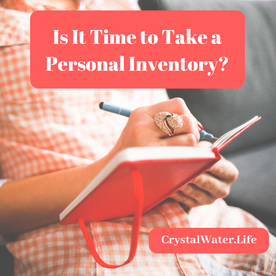 Taking a personal inventory can assist you in determining the toxic people or behaviors in your life, and how to make positive changes that will create lasting change. There are various methods to take a personal inventory which depends on your specific situation and personal goals. What messages were you given in your childhood? Were you forced to grow up too quickly because of dysfunction? There are many facets of those dysfunctions such as one parent having an addiction. Were you expected to help care for siblings? What about having to take care of you parent because the other wasn’t around. Growing up with those types of expectations and challenges can wear on a child. Did anyone ever tell you they were proud of you for no reason at all? Have you been made to believe you weren’t worthy of love or affection? That some how you just weren’t good enough or perfect enough. Did you feel shame or ridicule for not doing something someone thought was the right thing to do? Sometimes did you feel as though you didn’t fit in? Have you ever felt drawn to toxic relationships because anything else feels uncomfortable or foreign? These are only a few questions that can reveal the need to take a personal inventory of your life. Confronting these questions can identify toxic behaviors in your life. This is one of the first steps in the road to recovering from codependent life style. Below I have added some self-inventory questions to consider. Take your time and be honest with yourself. Add these to your journal. This is your time to shine and love yourself again. To do a personal self-inventory of your life, take time right now to ask yourself these simple but life exposing questions:
Learn to monitor and be aware of areas in your life that you have strengths and weaknesses and how it effects your mood. Observe what areas you may need to improve and other areas where you excel. Begin by taking small steps. Create a list of those areas in your life your great at. How do you view yourself? What are your positive attributes and negative areas you want to change? Keep a journal of your accomplishments, chart your progress and the outcomes in each situation during your journey of yourself. If you’re having challenges removing toxic people and behaviors from your life, then call me today. We will review your personal inventory to find out which areas you need the most support so you can start changing the image you see in the mirror and take steps toward self-love and acceptance. 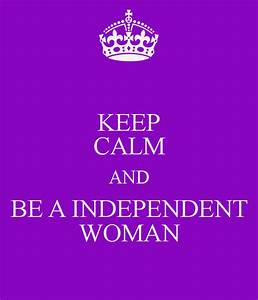 Codependency underlies all addictions. The core system of “dependency” manifests as reliance on a person, substance, or process, (an activity such as gambling, or sex addiction). Instead, having a healthy relationship with yourself, you make something or someone else more important. Codependency creates unhappiness because you just can’t be yourself. Sometimes you may think that if your being yourself, people won’t like you. I understand, I get it, yes, I’ve been there. Another possible reason may be that if your busy doing for others, you’re not focusing on yourself and your needs, desires, and goals. It’s time to begin on rediscovering yourself. The person you want to be. The reality is those people you’ve been spending all your time on can take care of themselves. Won’t it be a wonderful thing to plan a day for yourself doing what you want to do, and not feeling guilty. Let me say that again, and NOT feel guilty. How do you do that you may ask. Let’s begin by looking at 10 steps to create a happier you: • Placing yourself first again is important. No more should you sacrifice your needs. This leads to resentment. Stop ignoring your needs and desires. • Expressing yourself in other ways, use kindness and patience. Otherwise you could come off as being resentful and sarcastic. Also speaking up sooner in relation to the situation will allow you to express your feelings easier. • It will be awesome to see your relationships improve, when you are not solving their problems. Wow, That’s freedom and a sigh of relief. • This can be challenging, to not give unwanted advice and just be supportive. Many people just would rather have someone to just listen. • Stay in your lane so to speak. In the process to maintain our own energy, we must learn to Let Go. Another word is detachment. To detach is to allow another person to make their own choices, good, bad or ugly. We should not try to control the outcome. • Remember the No muscle, doesn’t saying yes, all the time get tiring? Turn it into a No and you will feel a weight lifted from you. • Give yourself permission to ask for assistance. As a codependent we tell ourselves we can handle all those issues, but it’s not our issues. So begin to give yourself permission, and you will begin to feel comfortable about asking for assistance. • You’re not preoccupied or obsessing on what’s not in your control. This is when we keep our thoughts in the present moment. Bring the focus back to yourself. This will maintain less stress and become more grounded. • To me this one was huge, to stop caring what others thought. • How much time has been wasted on worrying for and caring for another. We become so wrapped in doing that we forget to be ourselves. When we cease to be preoccupied, that’s when we can let go and be the wonderful selves we know we are. Changing behaviors isn’t easy. We must be patient with ourselves. To love our-selves enough to say, “It’s time to let go, to detach.” I’m here to support you on your journey to discovering yourself. Are you ready to LET GO? It’s time to take that step. I can offer you that safe space to create the changes that you feel are necessary for your self-growth and independence. Contact me now to learn how you can make yourself a priority, start building your no muscle and stop caring what other people think. crystalwater1110@gmail.com 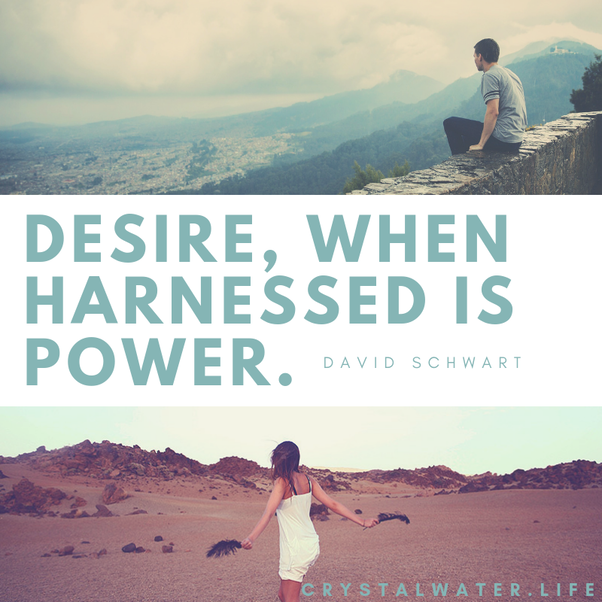 When is the last time you set goals for yourself? Are you someone who is always putting yourself second and not making time to work on your own projects? Things that will move your own life forward? Our wishes and our desires that are buried deep within our hearts can be brought to the surface through goal setting. Think for a moment! What is it that you have buried down deep that you know you want to bring forth and make it a reality? Take a moment and journal some ideas of those deep-seated goals that are kept in the corner of your heart that you’ve shoved down for so long. You are so worthy of making your dreams come true. That’s why goal setting is so important for our independence. When we create a goal, we are creating a plan for happiness for OURSELVES. Goals gives us direction and purpose. Goal setting can be fun and exciting. Setting goals can set into motion a powerful spiritual and emotional force. Then wonderful things begin to happen. Let’s look deeper into what setting goals can look like. Think of the acronym SMART: Specific: Goals are no place to waffle. They are no place to be vague. Ambiguous goals produce ambiguous results. Incomplete goals produce incomplete futures. Measurable: Always set goals that are measurable. I would say “specifically measurable” to take into account our principle of being specific. Attainable: One of the detrimental things that many people do—with good intentions—is setting goals that are so high that they are unattainable. Realistic: The root word of realistic is “real.” A goal has to be something that we can reasonably make “real” or a “reality” in our lives. There are some goals that are simply not realistic. You have to be able to say, even if it is a tremendously stretching goal, that yes, indeed, it is entirely realistic—that you could make it. You may even have to say that it will take x, y and z to do it, but if those happen, then it can be done. This is in no way to say it shouldn’t be a big goal, but it must be realistic. Time: Every goal should have a timeframe attached to it. One of the powerful aspects of a great goal is that it has an end—a time in which you are shooting to accomplish it. As time goes by, you work on it because you don’t want to get behind, and you work diligently because you want to meet the deadline. You may even have to break down a big goal into different parts of measurement and timeframes—that is OK. Set smaller goals and work them out in their own time. What goals do you want to start? Maybe you’d like to take that painting class, or maybe dinner at that new restaurant, also planning for that new career. What is it that will create joy in your life? Now it’s time to create a goal. Keep it simple and easy. Are you ready? Let’s do it! Start with a small goal. Write your goals in a journal. Start with 3-5 goals that are meaningful to you. Ask yourself if these goals are something you can reasonably accomplish. Remember to not set yourself up for failure. Remember and follow SMART. Post one of your goals below. I’d love to hear what you discovered.  How is your “no” muscle? Are you creating personal space for yourself? Are you creating healthy boundaries? What are boundaries you ask? Setting boundaries is often thought of as something you set between yourself and another person. Boundaries are not as much for the other person as they are for you. We need boundaries or else we lose ourselves. It’s as if we meld into the background. Our feelings and emotions are tucked inside or expressed in agitation because we allowed our boundaries to be crossed. When setting boundaries, be aware of how you set those boundaries. Did you know that poor boundaries are boundaries that can be too weak and there isn’t enough separateness between you and another or your partner? Boundaries that are too rigid, keep you from being close to another person. Then there are boundaries that bounce back and forth between close and rigid. Having clear set solid boundaries outwardly and inwardly shows a level of respect toward ourselves. Setting boundaries with yourself is important in creating changes. Is your initial reaction to do whatever it is to please another person? It’s time to set personal boundaries.
We will map out a strategy and set some personal goals to get your feeling confident about flexing your no muscle, staying true to yourself and getting your own needs met. Hello! I'm Gena Kidd. Developing a strong and confident self-image can be challenging. Especially when you may lose sight of who is most important. That person is You. It’s time to learn how to place the focus back on yourself. I can provide you with the Transformational Life & Spiritual Coaching you need to Create Goals, to Create Change.
Where Do I Begin, and You End? Do you fear being alone? Do you say yes when you mean no? Do you have difficulty expressing yourself, thoughts and feelings? How many times have you put yourself second to someone else needs? Do you struggle with accepting responsibility for other’s feelings or action? If you said “yes” to any of these questions, then you could have codependent tendencies. Codependency is a strong desire to please others, consistently putting the needs of others before yours. Lost touch with who they are as an individual. I have been where you are. I have seen those days of putting others before my needs. Not speaking up for myself. Allowing others to put my needs second. My journey began when I realized I had a failed marriage and friendships that weren’t honest due to codependent behaviors. I grew up with a special needs brother. Throughout my young years, my brother was the focus. My mother was involved in his school activities and charities to raise money for his school. I always felt, especially as I grew into my teenage years, that I needed to be the perfect one. I always felt I fell short of this false believe. So, I believe this is where my codependency began. Looking back into your own life and taking an inventory you may discover where and when yours began. My turning point began. I knew I needed to make changes in my life, personal, and spiritual. I was in a marriage that became more and more manipulative and obsessive due to his infidelity. I did seek out a counselor to help me over come these codependent tendencies. She gave me the tools I needed to change my thinking and impression of myself. A few years had passed, and I had been alone and single for 7 I tried to be happy. It was time that I worked on myself. I focused on myself for a change. I became involved in a spiritual group where I became strong in myself with the help of the Divine. I discovered my gifts and found myself. I won’t say that sometimes I may have an off day. The moment I realize I may be having a self-defeating moment I turn it immediately around to being grateful. This is a prime example of how can help you to release challenges that could hold you back from your goals and dreams. When was the last time you focused on something you would like to do? Something that gives you joy and pleasure. As codependent people we get caught up in even to the point of being enmeshed in another’s life. You deserve time for yourself. Let’s talk about turning your focusing on yourself. When you start those tendencies of preoccupation with someone else, its then you should focus on yourself. How you ask? First is to spend quality time with yourself. Yes, I said quality, not time as in an hour or half an hour. Set down and maybe journal. This time is to raise your awareness your consciousness, to heal and bring together integrate all past experiences. Take a few minutes after the morning alarm and think about your day and your needs. Who do I need to set boundaries with? Take a walk during lunch Remember you cannot fix anyone. When you are beginning to have those its then we turn the focus on yourself. Journal for a few minutes each day. Add affirmations and quotes to keep the focus on yourself. Writing about your feelings. Learn to say No, make a list of activities you can enjoy. Remember you can’t fix another person’s problems. Learning to let go isn’t easy. Turning the focus towards yourself is not being selfish. It’s a sign of respect towards yourself. Set boundaries. Together we can be Dependent and learning to love ourselves. Remember you not alone. Many people stay in self-defeating relationships for lots of reasons. I did the same. After my divorce I spent time with myself. Yes, it wasn’t easy, and it takes time to let go of the old you and reacquaint yourself with you. The you want to be when was the last time you said something loving and positive to yourself? What about a walk in the park. Take a drive, discover new scenery or even an overnight stay someplace new and exciting. · Take a book with you to enjoy, allow your emotions to flow and journal about those feelings. · First is to spend quality time with yourself. Yes, I said quality, not time as in an hour or half an hour. · Set down and maybe journal. This time is to raise your awareness your consciousness, to heal and bring together integrate all past experiences. · Take a few minutes after the morning alarm and think about your day and your needs. Who do I need to set boundaries with? Take a walk during lunch Remember you cannot fix anyone. · When you are beginning to have those its then we turn the focus on yourself. Journal for a few minutes each day. Add affirmations and quotes to keep the focus on yourself. Writing about your feelings. · Learn to say No, make a list of activities you can enjoy. Remember you can’t fix another person’s problems. Learning to let go isn’t easy. · Turning the focus towards yourself is not being selfish. It’s a sign of respect towards yourself. Set boundaries. If you would like to begin on yourself, if you’re ready, then you can reach me through my email or web site listed below. Create Goals, Create Change Gena Kidd Integrative Wellness Practitioner www.crystalwater.life crystalwater1110@gmail.com It’s time to love yourself. It’s time to be first and only you can do that. Allow me to show you how. |
HoursM-F: 9am - 6pm
|
Telephone502-682-6577
|
crystalwater1110@gmail.com
|


 RSS Feed
RSS Feed